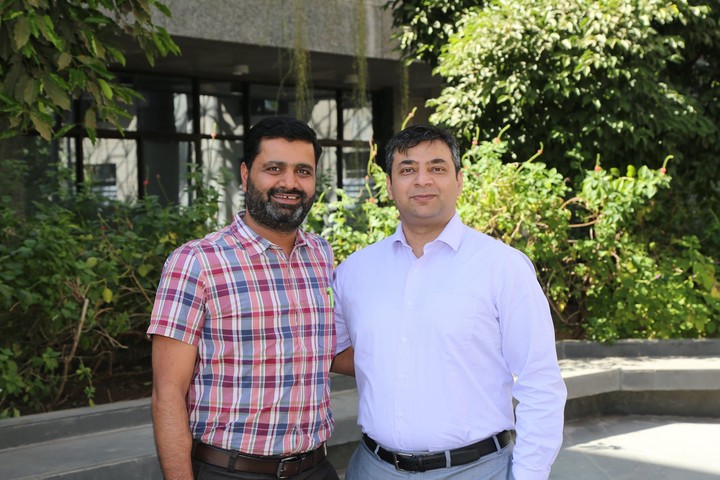Seminar - Prof. Sushant Anand
 Prof. Amit Arora with Prof. Sushant Anand
Prof. Amit Arora with Prof. Sushant Anand
Dr. Sushant Anand from the Department of Mechanical & Industrial Engineering at University of Illinois at Chicago delivered the recent Materials Science and Engineering Seminar at IIT Gandhinagar.
He interacted with students about the condensation on liquid surfaces and its role in industrial settings. He presented the mechanics of a new approach for formulating nanoemulsions by condensing vapor on bulk liquids in the presence of surfactants and nanoparticles. He illustrated how using liquids within textures of a solid can enhance condensation and delay ice formation. The talk was received much applause from the audience.
Both Prof Anand and Prof Arora were dual-degree batchmates at IIT Kharagpur and are now collaborating on an 𝗡𝗦𝗙-funded project.
We are grateful to Dr. Anand for visiting us, our campus and sharing his knowledge with us. We look forward to more such interactions in the future.
Title: Making emulsions and water using condensation
Abstract
Breath figure (i.e. condensate) formation on surfaces (solid or liquid) plays a great role in diverse natural and industrial settings. Condensation on solid surfaces for example, plays critical role in condensers, HVAC, fuel cells and water harvesting applications, but on highly supercooled surfaces leads to ice/frost that adversely affect the safety and effective performance of energy and transportation industries worldwide entailing yearly economic damage of billions of dollars. Condensation on liquids on other hand has not received its due attention despite its obvious importance in oil recovery, breath-figure templating etc. In the first half of the talk, I will briefly discuss the mechanics of a new approach for formulating nanoemulsions by condensing vapor on bulk liquids in presence of surfactants and nanoparticles. Compared to existing methods, formation of nanoemulsions by condensation is a bottoms-up approach that is simple, fast, inexpensive, scalable and energy efficient. I will discuss how the vapor condensation process can be adapted for formulating wide variety of nanomaterials and complex emulsions for applications in biology, chemistry and materials science. In the second half of this talk, I will discuss how use of liquids within textures of a solid can enhance condensation and delay ice formation. I will then demonstrate how such liquid infused surfaces can fail and how such failure can be overcome by the use of certain thermos-responsive liquids that are phase change materials (PCM). Some PCMs can impede condensation frosting lasting up to 300 times longer than conventional surfaces under identical environmental conditions. The freezing delay is primarily a consequence of the trapped latent heat release due to condensation, but is also affected by the solidified PCM surface morphology and its miscibility in water. Regardless of surface chemistry, PCM infused textured surfaces exhibit low droplet adhesion when operated below the corresponding melting point of the solidified PCMs, engendering ice and frost repellency even on hydrophilic substrates.